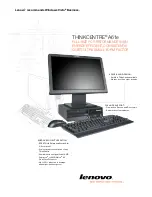
61
Chapter 12 Free EG
3 Start the Pattern, and make your moves.
Press the Start/Stop button.
The metronome clicks to lead you into the recording, so you can start your
knob moves right with the start of the Pattern.
Remember the rule: One knob, one track. Once you record a certain knob,
no other knob can be recorded to the track (unless you start the whole Free
EG recording again). Any tweaking of other knobs is ignored.
4 To stop recording, press the Start/Stop button.
If you want to re-record the track or record moves to other tracks, go back
to Step 2 above and start all over again.
5 To hear your Free EG recording, make sure that the
appropriate track buttons are on, then press the
Start/Stop button to play the Pattern.
Remember to save your newly edited Pattern! (See Tip 60.) All your Free
EG track recordings will be saved right along with it.
The display number indicates the current measure number. If you’ve set Length (see Tip 63
below) to “
2
,” the Pattern loops two times for recording, and the display changes accord-
ingly.
• Recording to more than one track at a time
Press the appropriate Free EG Track buttons. During recording, the AN200 automatically
assigns each knob you move to the next available track. For example, let’s say you’re record-
ing to Tracks 1 and 2. You move the CUTOFF knob first, and that’s recorded to Track 1. Then,
while tweaking Cutoff, you move [FEG DEPTH] — which records to Track 2.
• Take your time and let the Pattern loop!
In a variation of the above hint, you can set all the tracks to record, then tweak each one sepa-
rately as the Pattern loops. Each of your moves is properly recorded to a separate track, and
you can hear the effect of your last knob tweak as you record the next.
• Use the four tracks to your advantage
Record your tweaking of one certain knob to all four tracks, then choose the best “take” from
the four. Just make sure to turn off each button after you record to it — so it doesn’t play back
and disturb your recording of the next button. Listen to each track in turn by turning the
appropriate button on.
• Change the way your Free EG tracks play back
The Type parameter (see Tech Talk below) gives you four different ways to loop the Free EG
tracks. Try these out when playing your Pattern and hear the interesting things they do to your
tracks.
Free EG — Type and Trigger
Type
Determines the type of loop for Free EG play-
back. Press the [MODE] button repeatedly
until “
tYPE
” appears, then use the [DATA]
knob to change the setting.
Settings
oFF
No loop.
FUd
(Forward)
Free EG sequence loops from start to
end.
FUdH
(Forward Half)
Free EG sequence loops from the middle
to the end.
ALt
(Alternate)
Free EG sequence loops from start to
end, then end to start.
ALtH
(Alternate Half)
Free EG sequence loops from middle to
end, then end to middle.
Trigger (“
triG
”)
Determines how playback of the Free EG
tracks is triggered. Normally, this should be
set to Free (“
FrEE
”), so that the tracks play
back when the Pattern is started. Setting this
to MIDI (“
midi
”) lets you start Free EG
playback from a connected MIDI keyboard or
sequencer.
Press the [MODE] button repeatedly until
“
triG
” appears, then use the DATA knob to
change the setting.
Settings
FrEE
(Free)
Triggers playback of the Free EG tracks
from a random start point, when a Note
On message is received from a con-
nected MIDI device, or when a key on the
AN200 is played, or when the Pattern is
started.
midi
(MIDI in Notes)
Triggers playback of the Free EG tracks
from the start, when a Note On message
is received from a connected MIDI
device, or when a key on the AN200 is
played.
ALL
(All Notes)
Triggers playback of the Free EG tracks
from the start, when a Note On message
is received from a connected MIDI
device, or when a key on the AN200 is
played, or at the first recorded note of
the Pattern (which may or may not be
the start of the Pattern).
Strt
(Sequencer Start)
Triggers playback of the Free EG tracks
from the start, only when the Pattern is
started.
















































